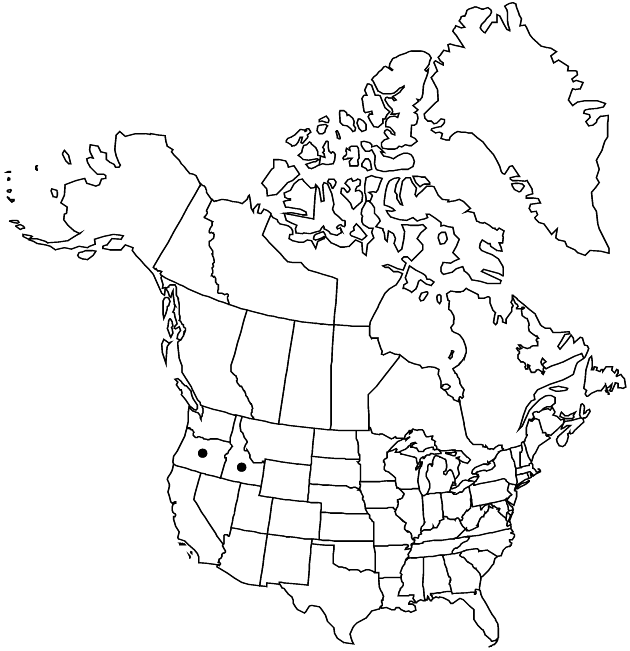Difference between revisions of "Erigeron davisii"
Sida 21: 22. 2004.
FNA>Volume Importer |
FNA>Volume Importer |
(No difference)
| |
Revision as of 18:43, 24 September 2019
Perennials, 10–30 cm; taprooted, caudices simple or with relatively short, thick branches. Stems erect, hirsuto-villous to loosely strigose (hairs relatively translucent and vitreous, unequal in lengths, 0.1–1 mm), sometimes sparsely minutely glandular. Leaves mostly basal (persistent; petioles prominently ciliate, hairs spreading, thick-based), eglandular; blades linear to narrowly oblanceolate, 20–100 × 1–3.5 mm, abruptly reduced distally, margins entire, faces strigose to strigoso-hirsute, eglandular. Heads 1. Involucres 5–8 × 10–15 mm. Phyllaries in 2–3 series, loosely hirsute to hirsuto-villous, sometimes sparsely minutely glandular. Ray florets 50–80; corollas usually white, 8–14 mm, laminae (1.2–1.8 mm wide) coiling. Disc corollas 3.1–4 mm (glabrate, throats not indurate or inflated). Cypselae (obovoid) 2.1–2.5 mm, 2-nerved, faces sparsely to moderately strigoso-villous; pappi: outer of setae, inner of 14–20 bristles.
Phenology: Flowering (Apr–)May–Jul.
Habitat: Bare, rocky ridges and slopes, basalt outcrops, sparsely vegetated woodland openings or edges, commonly with grasses
Elevation: 1200–1800 m
Discussion
Of conservation concern.
Selected References
None.
